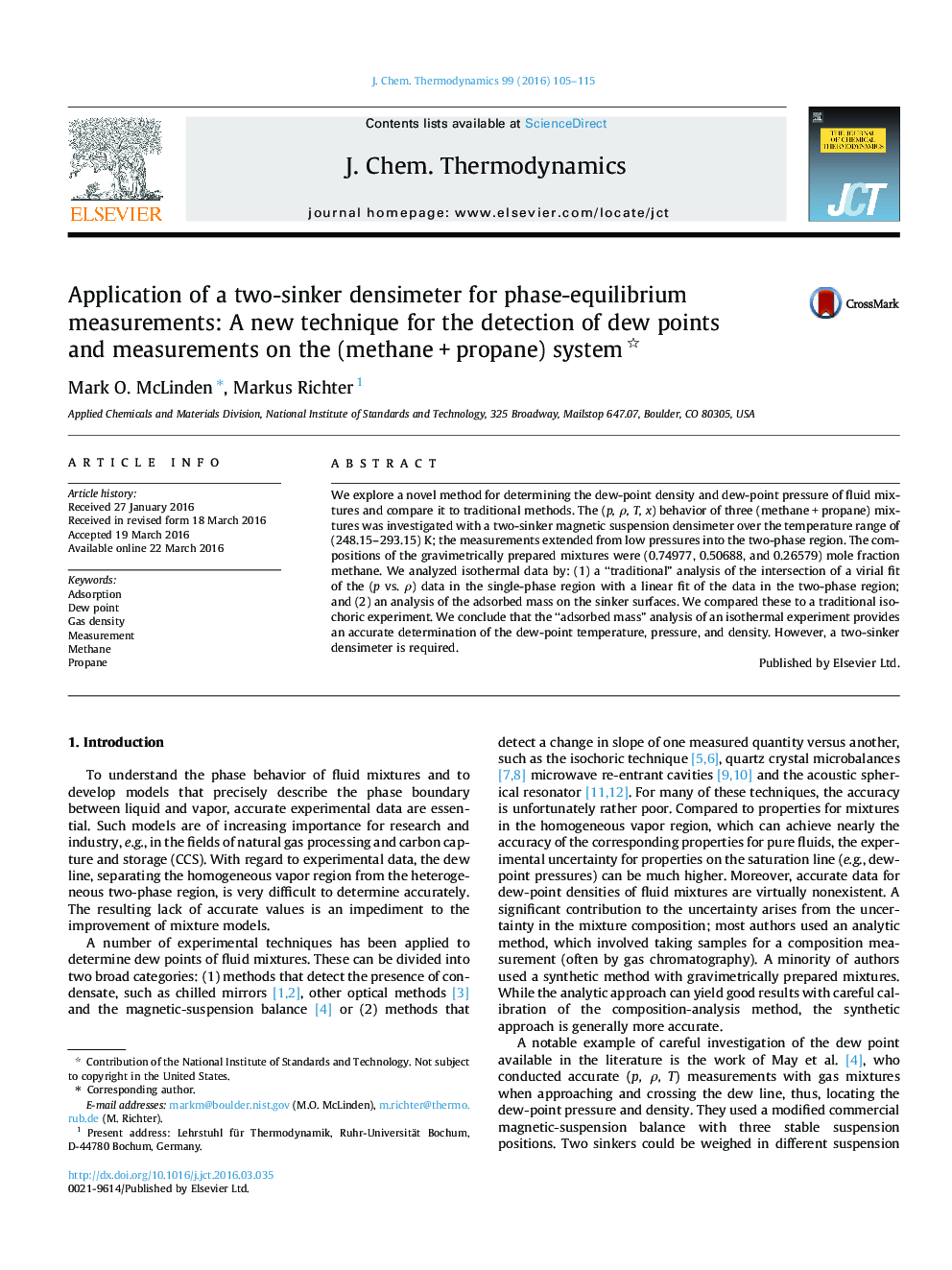| Article ID | Journal | Published Year | Pages | File Type |
|---|---|---|---|---|
| 215029 | The Journal of Chemical Thermodynamics | 2016 | 11 Pages |
•A new technique for detecting dew points in fluid mixtures is described.•The method makes use of a two-sinker densimeter.•The technique is based on a quantitative measurement of sample mass adsorbed onto the surface of the densimeter sinkers.•The dew-point density and dew-point pressure are determined with low uncertainty.•The method is applied to the (methane + propane) system and compared to traditional methods.
We explore a novel method for determining the dew-point density and dew-point pressure of fluid mixtures and compare it to traditional methods. The (p, ρ, T, x) behavior of three (methane + propane) mixtures was investigated with a two-sinker magnetic suspension densimeter over the temperature range of (248.15–293.15) K; the measurements extended from low pressures into the two-phase region. The compositions of the gravimetrically prepared mixtures were (0.74977, 0.50688, and 0.26579) mole fraction methane. We analyzed isothermal data by: (1) a “traditional” analysis of the intersection of a virial fit of the (p vs. ρ) data in the single-phase region with a linear fit of the data in the two-phase region; and (2) an analysis of the adsorbed mass on the sinker surfaces. We compared these to a traditional isochoric experiment. We conclude that the “adsorbed mass” analysis of an isothermal experiment provides an accurate determination of the dew-point temperature, pressure, and density. However, a two-sinker densimeter is required.
Graphical abstractFigure optionsDownload full-size imageDownload as PowerPoint slide
